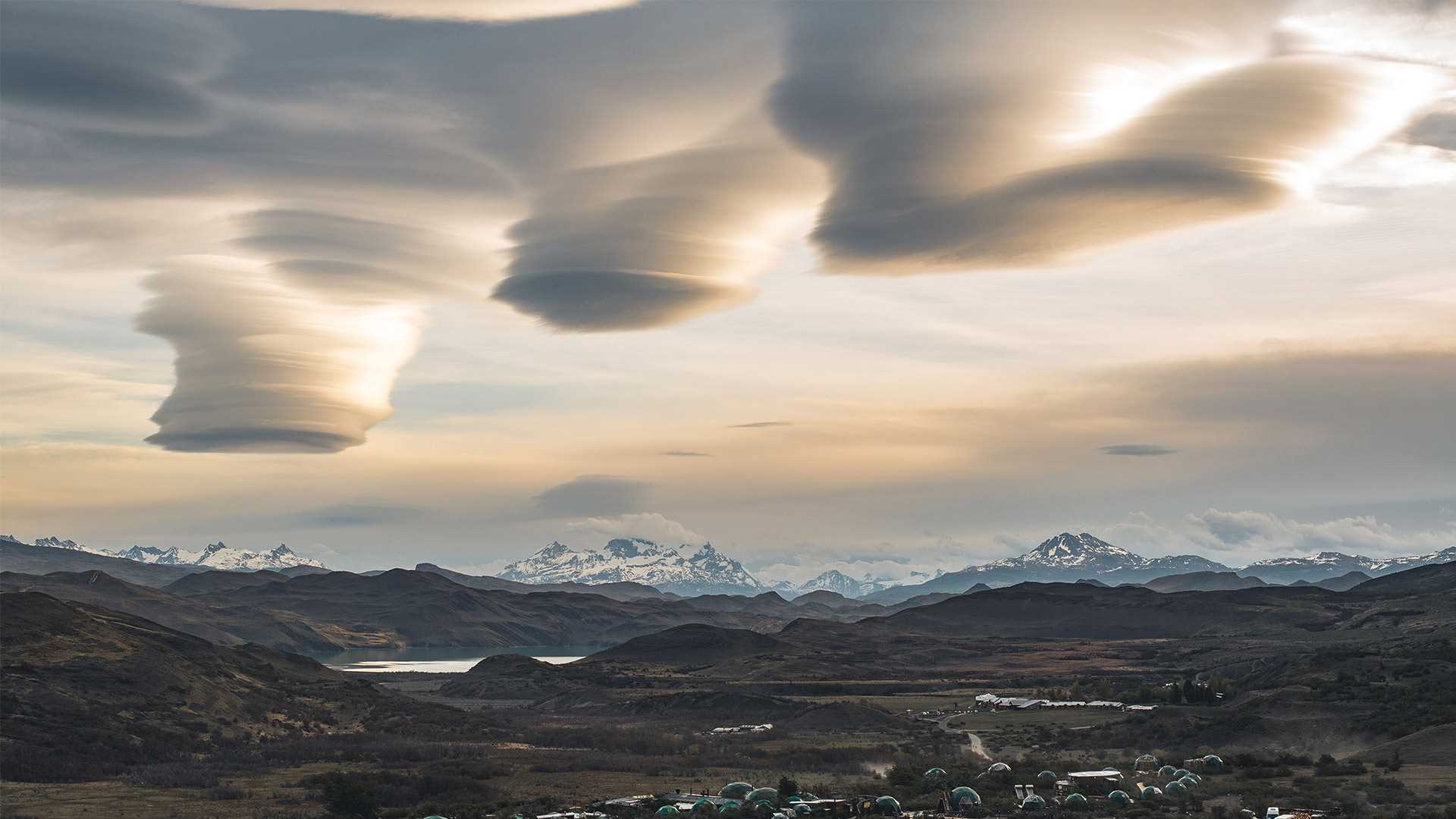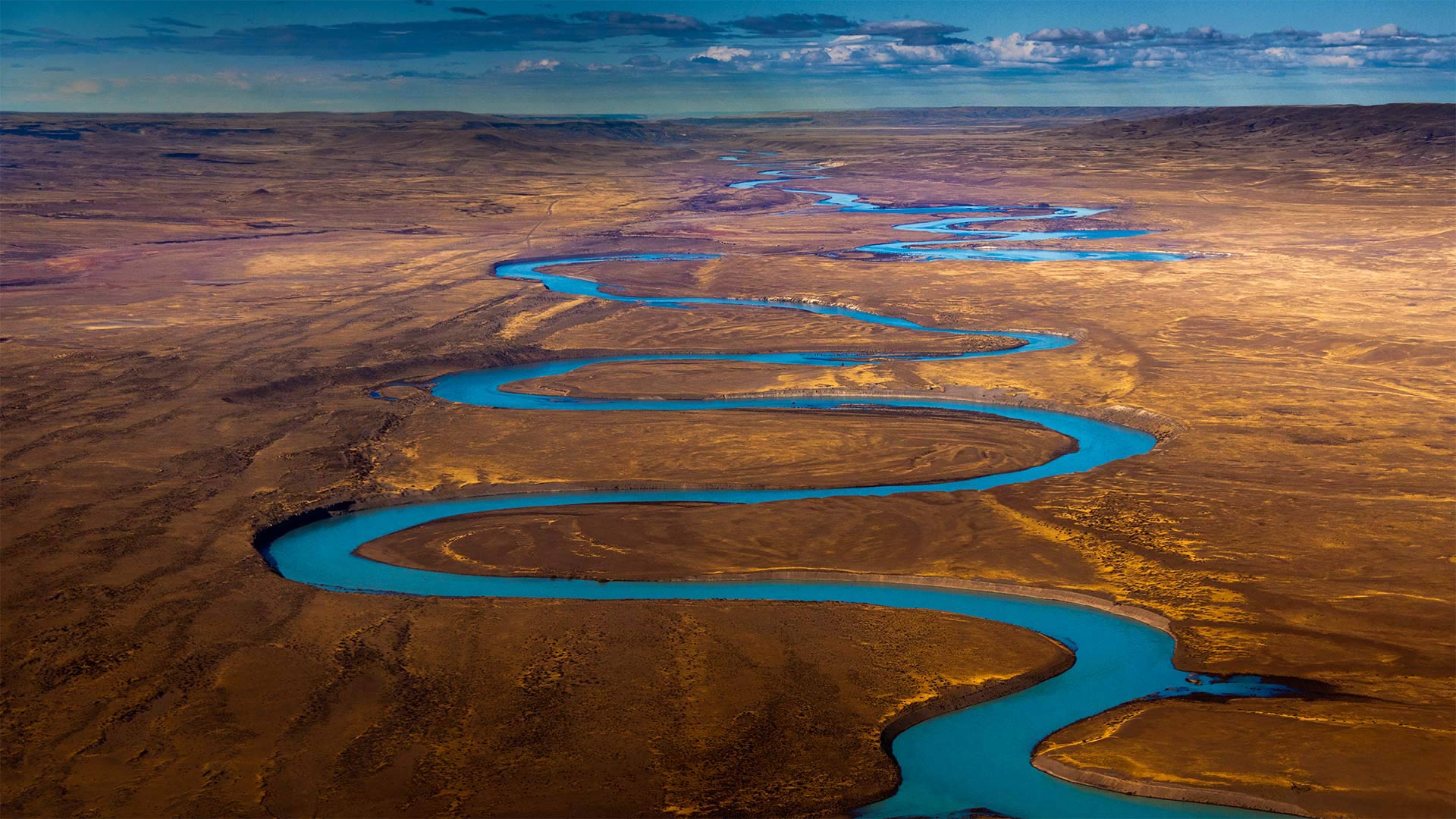透镜状云,巴塔哥尼亚 Lenticular clouds, Patagonia (© Sasha Juliard/Shutterstock)

透镜状云,巴塔哥尼亚 Lenticular clouds, Patagonia (© Sasha Juliard/Shutterstock)
我们已经确认了这些“飞行物体” We've identified these 'flying objects'
世界气象日
尽管它们看起来像复古科幻宇宙飞船,但这些奇怪的形状是透镜状的云。它们的名字,就像lens这个词一样,来自拉丁语中扁豆的意思,因为它们经常呈这种形状。当潮湿、稳定的空气遇到由建筑物或山脉等大型站立物体引起的上升气流时,它们开始在对流层形成。空气上升,如果其顶部低于露点,就会凝结成这些迷人的云。
多亏了气象学,我们才能解释这些大气现象。今天是世界气象日,纪念联合国领导的世界气象组织。自1950年以来,该组织一直在其成员之间交换信息,以便世界能够更好地了解和预测我们的大气层和天气。
World Meteorological Day
Though they may look like retro sci-fi spaceships, these strange shapes are lenticular clouds. Their name, like the word lens, comes from the Latin word for lentil, as they often take that shape. They begin to form in the troposphere when moist, stable air meets an updraft caused by a large standing object like a building or mountain. The air rises and if its crest goes below the dew point, it condenses into these fascinating clouds.
Thanks to the science of meteorology, we can explain these atmospheric phenomena. Today is World Meteorological Day, which commemorates the UN led World Meteorological Organization. Since 1950, this group has exchanged information between its members so the world can benefit from better understanding and predicting our atmosphere and weather.
圣克鲁斯河,阿根廷巴塔哥尼亚 Santa Cruz River, Patagonia, Argentina (© Coolbiere Photograph/Getty Images)

圣克鲁斯河,阿根廷巴塔哥尼亚 Santa Cruz River, Patagonia, Argentina (© Coolbiere Photograph/Getty Images)
Meandering through Patagonia
Squiggling east from the Andes mountains to the Atlantic Ocean, the mighty Santa Cruz river in Argentina's Patagonia region flows over some of South America's sparsest terrain. Over the centuries, some of history's most notable explorers have been drawn to the winding waterway: Ferdinand Magellan's 1520 expedition discovered its coastal delta, and Charles Darwin (on the same voyage that took him to the Galápagos Islands) studied the area's ecosystem during a grueling 1834 side-trip up the river. Even now, very few settlements exist along the 240-mile course of the Santa Cruz, considered the last major free-flowing river in Patagonia.
The river's many U-shaped bends, called meanders, are carved out gradually: When flow pressure isn't equal on both banks of a river, erosion tends to warp small bends into dramatic, sweeping curves over long periods of time. But the prospect of much swifter change looms over the Santa Cruz: A controversial hydroelectric dam project already underway downstream will potentially have a drastic impact on the entire river's hydrology and ecosystem.